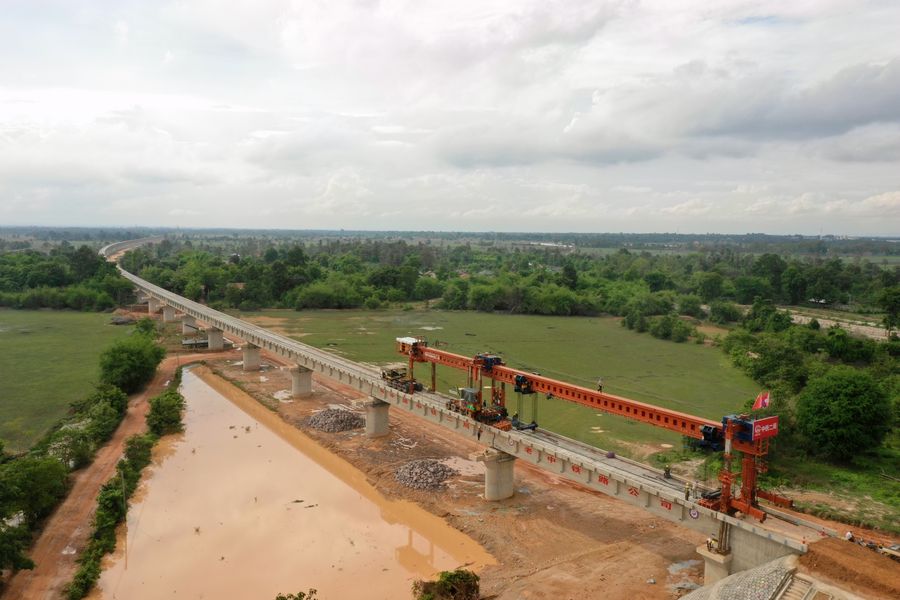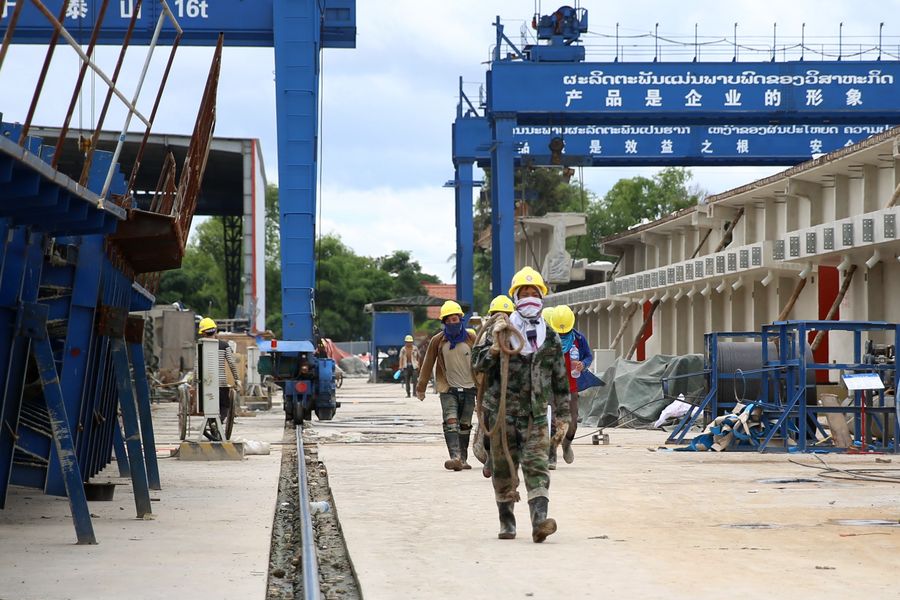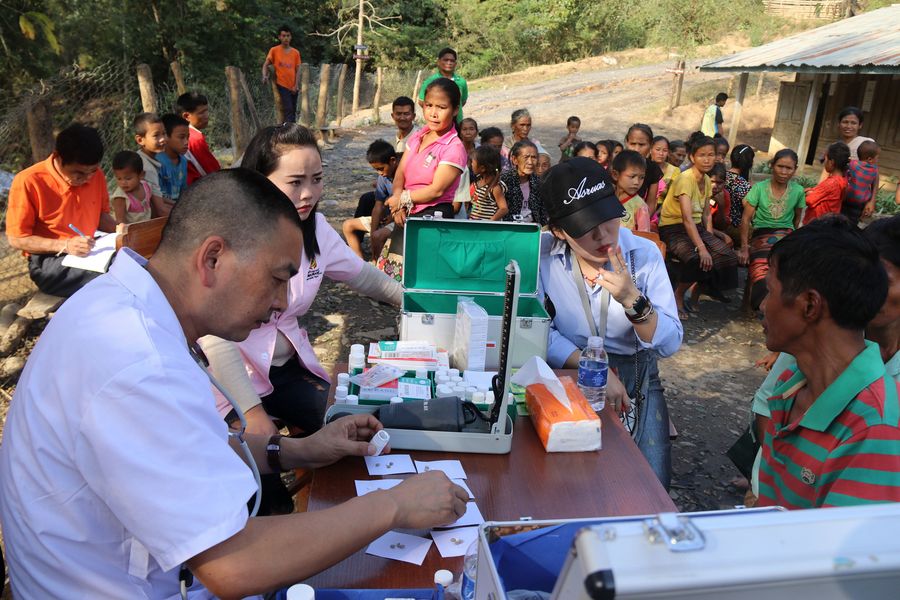
Aerial photo taken on June 1, 2019 shows the construction site of the Nam Khone super major bridge in Laos. (Xinhua/Zang Heng)
The China-Laos railway project, a landmark construction project in Laos, is a bridge of friendship between the people of Laos and China, bringing Lao and Chinese people closer.
by Zhang Jianhua, Wang Shan
VIENTIANE, Nov. 18 (Xinhua) -- An aerial view from the China-Laos border to the capital Vientiane reveals a ruled, comparatively straight line embedded into northern Laos, laid among the foothills, crossing gullies, rivers and fields, and with small arcs bypassing villages.
It's the China-Laos railway project, a landmark construction project in Laos, and a bridge of friendship between the people of Laos and China.
The railway beam fabrication yard of China Railway No. 2 Engineering Group (CREC-2) for the China-Laos railway project is located in Songpheuy Tai village of northern Vientiane. At the beginning of the project, the staff of the yard temporarily rented rooms in the village inn owned by Vanmany.

Lao workers at the China Railway No.2 Engineering Group (CREC-2)'s China-Laos railway beam fabrication yard in Laos on July 22, 2019. (Photo by Xiong Tianze/Xinhua)
Since then, regardless of the shortage of rooms, Vanmany always reserved rooms for her "old friends", if needed. At her relatives' weddings or grandchild's birthday parties, she also prepared VIP seats for the Chinese engineers. "The young Chinese engineers have come here to build the railway, away from home. We will treat them like family," she said.
The family-like love also extends to the far south of Laos.
After the dam-breaking flood occurred in Attapeu, southern Laos, last July, at the request of the Lao government, the Chinese engineering companies, along the China-Laos railway construction teams, rushed to build four brand-new quality bridges in the flooded area, in less than 50 days.
To honor this achievement and the contribution of the Chinese engineering companies, Lao Prime Minister Thongloun Sisoulith signed an order of commendation for the Chinese companies. On behalf of the government, Lao Minister of Public Works and Transport Bounchan Sinthavong conferred development medals to them last September.

The PowerChina Sinohydro Bureau 3 Co., LTD, a Chinese engineering company building the fourth section of the China-Laos railway in northern Laos' Luang Prabang province, offers charity clinics to local villagers on Jan. 11, 2019. (Sinohydro Bureau 3/Handout via Xinhua)
While building the bridges, CREC-2 stores its materials and equipment in the house of a 31-year-old villager named Phoutthavan, who always helps handle the materials himself and prepares free food for the Chinese engineers who worked day and night. Before leaving, the CREC-2 team helped Phoutthavan install electricity and lamps to his house, and paved concrete paths in his yard.
In October, 2010, amid a shortfall of workers, the CREC-2 yard went back to Attapeu for recruitment and recruited more than 200 local villagers.
On every construction site of the China-Laos railway, the participating Chinese companies actively donate funds to local schools and poor students, train local staff, deliver medicine, build roads and drinking water projects and other infrastructure, invite local people to join the Chinese companies' cultural and sporting activities, and take part in local communities' festivals and parties.

Students from China-Laos Friendship Nongping Primary School receive gifts from China Railway No.2 Engineering Group (CREC-2)'s China-Laos railway beam fabrication yard in Lao capital of Vientiane June 1, 2019. (Xinhua/Zhang Jianhua)
Zhang Linlin, a translator for the Sinohydro Corp. Engineering Bureau 14 on the railway project, after studying in Laos, returned to the mountains of Laos to participate in the railway construction.
She told Xinhua, "I am glad that I learnt the Lao language at college. No matter where I am going in Laos, I can always feel the Lao people's friendship with the Chinese people. I am also happy that I can respond to the call of the country and witness the prosperity and development brought by the construction of the China-Laos railway."
"In just two years, I personally saw the tremendous changes brought about by the construction of the railway in Laos," she said.
The China-Laos Railway is a strategic docking project between the China-proposed Belt and Road Initiative and Laos' strategy to convert from a landlocked country to a land-linked hub.
The 414.332-km railway, with almost 200 km of tunnels and 62 km of bridges, will run from the Boten border gate in northern Laos, bordering China, to Vientiane, with an operating speed of 160 km per hour.
The electrified railway is built with the full application of Chinese management and technical standards. The project started in December 2016 and is scheduled to be completed in December 2021.■



